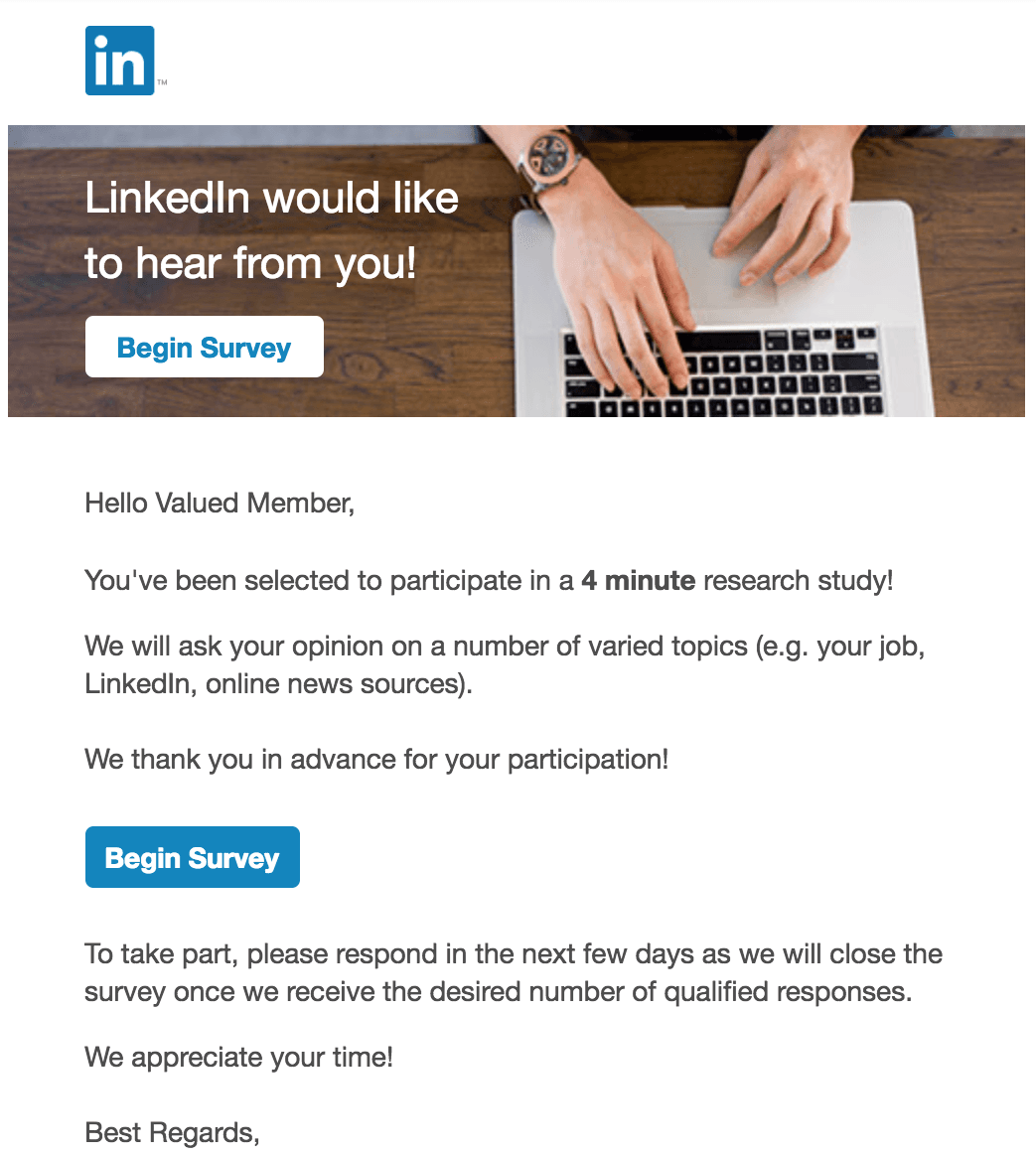Persuasion techniques by email: Your Expertise is Requested
Management
LinkedIn showed an excellent example of applying persuasion techniques on the last email I received from them, in September 2018.
Subject:
Your Expertise is Requested
Body:

Would you fill out the survey? Let’s analyze it.
Persuasion Technique 1: Liking
First, we have the subject:
Your Expertise is Requested
Second, the email body starts with:
Hello Valued Member
Third, it clearly indicates that the user is special:
You’ve been selected…
These are compliments and suggest an attempt to make the reader feel important.
People prefer to say yes to those that they like. The goal of those lines is to make the reader like LinkedIn more, to prepare the ground for a request.
Persuasion Technique 2: Reciprocity
Observe the seemingly innocent note:
We thank you in advance for your participation!
The purpose of showing gratitude in advance is to encourage the reader to fulfill the request.
The reciprocity principle makes us feel obliged to return back a favor, in this case, gratitude.
Persuasion Technique 3: Scarcity
To me, this one is the most astonishing persuasion technique. Carefully read the following sentence:
To take part, please respond in the next few days as we will close the survey once we receive the desired number of qualified responses.
The ability to take action is limited both in time and quantity. Unless the user fills out the survey soon, they might lose the opportunity to do it.
It’s inherent to human nature wanting something more because of it being limited. Moreover, we frequently want things only when they are scarce, and don’t want them as much if such things are abundant.
The Catch
Here’s the catch: a LinkedIn user obtains no real benefit or reward by filling out the survey. Why would they spend their time doing it?
Some LinkedIn users might be inclined to cooperate based on previous reasons. However, the messaging was carefully designed to target that majority of users that normally would not be interested. With a bit of influence and persuasion, they might just comply with the request.
Taking It Further
How could we make this email even more persuasive? Here are some thoughts:
Reason. Indicating why filling out the survey is important. A simple “…so that we can keep making LinkedIn better” would suffice.
Social Proof. Could be something like “Members that benefit from LinkedIn, like you, continuously help us improve”. Note that this sentence also plays with the principle of consistency, another influence technique.
Resources
Learn more by watching Robert Cialdini’s video explaining the 6 principles of persuasion or reading his books.
Video: https://youtu.be/cFdCzN7RYbw
Book, Influence: The Psychology of Persuasion: https://www.goodreads.com/book/show/28815.Influence